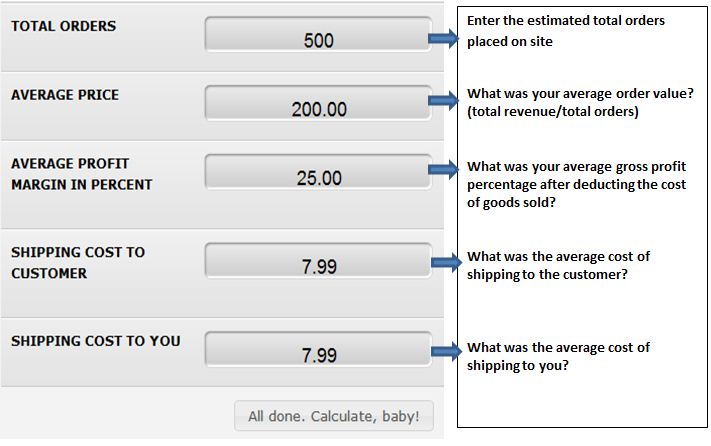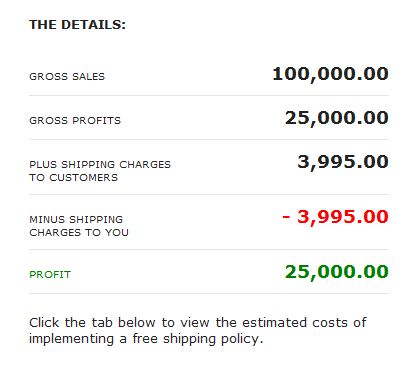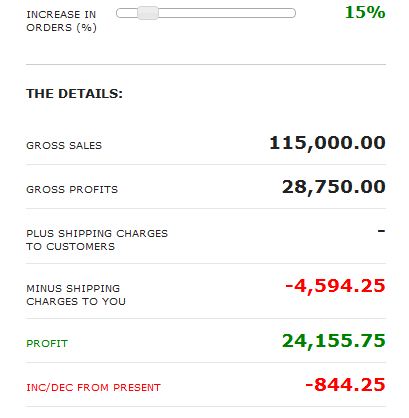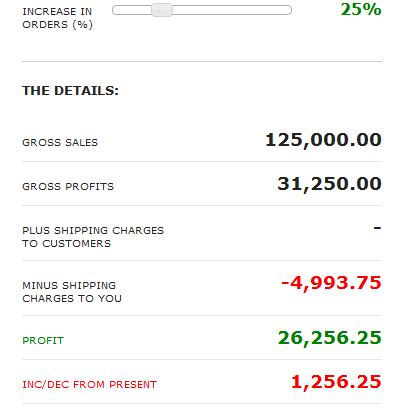The Free Shipping Formula for Online Retailers

There is something decidedly special about offering free shipping. Whether it’s because everyone loves free stuff or paying for shipping is extra painful, I can safely say: sales volume will increase when you offer Free shipping.
Free Shipping taps into the dark corridor that encases our credit card and whispers “buy me.” It rationalizes buying something online that we might just as easily buy at the store down the street. It justifies our retail itch and transforms maybe-buyers into full-fledged conversions. Sounds great right?
Maybe.
From the consumer’s perspective, free shipping is a huge pull factor but when does it make sense for you to offer it? Will the sales increase justify the $5.99 you fork over to pay for free shipping? In this post, I’ll review the decision making process and outline the factors you’ll need to consider when deciding whether or not to offer Free Shipping.
Your product type and margins are typically a good place to start when trying to find the most profitable shipping options. You can narrow your approach dramatically by segmenting your product line into the 3 categories below.
Low Margin Products – If your site sells inexpensive products or has thin margins, absolutely free shipping is not your best option. The net per orders would be taking a bigger hit than the extra profit from additional orders. Instead you might offer free shipping after order volume reaches a certain threshold. For instance, “Free Shipping on orders > $50.” This way you avoid paying the fee for those lower priced items which already have razor thin margins. I recommend setting the threshold around $20 – $25 above your average order value, to incentivize those buyers to look around more and a qualify for the free shipping promotion.
Unique Products – If your store sells products that are mostly unique and are otherwise hard to find online, I recommend that you offer free shipping but mark up your products to include your average shipping cost. If potential consumers can’t very easily compare prices, the allure of free shipping will most likely lead to extra orders and an increased conversion rate. You’re hiding the price of shipping within your prices but still reaping the “special benefits” of free shipping because your product are somewhat difficult to find or non-competitive.
High Margin Products – With more expensive items it’s almost a no brainer to offer free shipping. As long you aren’t selling 300 pound fountains or furniture, the extra revenue and increased sales will justify your shipping fees. Free Shipping does cost you $9.99 an order but to a consumer purchasing a high end item, it’s worth much more than the cost to you. Study after study shows that free shipping reduces shopping cart abandonment rates and when your margins are high, the extra conversions justify the extra expenditure.
I’ve summarized the Pros and Cons of adding Free Shipping below, but your decision should really be based off the numbers.

The Good Geeks over at MarketBrain and Shopify put together an app that will help you realize the impact of Free Shipping on your margins.
Step 1: Enter Sales Numbers.
Input your estimated monthly totals for orders, avg. price, avg. margin, customer shipping, and your shipping costs.

Step 2: Hit Calculate.
The details layout the way things are if you were to leave them as is. Right now you are making $25,000 in profit per month and charge your customers around $4,000 extra in shipping charges.

Step 3: Click tab, project sales increase, analyze and make a decision.
You’ll notice that the increase in orders is defaulted to a 15% increase. 15% is a modest estimate and most times this number improves as your customer base adapts to the policy. In this case, with Free Shipping, sales revenue jumps to $115,000 and gross profits increase by $3,750.00.
But after we factor in your expenditure on shipping and calculate the difference in profit we end up with a projected loss. With a regular 100k/month website that has a 20% margin, that receives a 15% increase in sales, you will actually lose $844.25.
However, in the second, scenario, you experience a 25% increase in sales and now profit an extra $1,256.25. Not only are your customers more likely to convert and stay with you long term, you make more money!


Depending on the volume you normally do and average shipping costs, a 15% increase might make economic sense. Everything requires testing, but using what you know about your buyers already and the cost calculating app, you should be able to project whether or not Free Shipping will work for you.
Feel free to ping me at [email protected] with any questions. Cite this post and I’ll let you in on a Google Shopping shipping secret that I can’t advertise.
